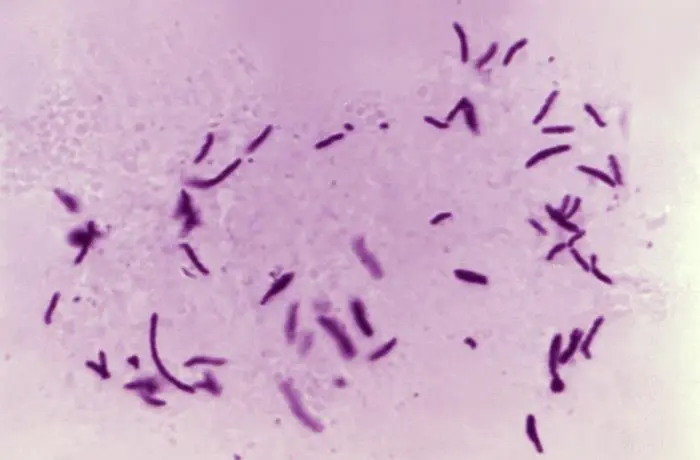Tuberculosis

Tuberculosis or TB is caused by the Mycobacterium Tuberculosis bacterium, which mostly affects the lungs. Once the bacteria is introduced into the body, an infected individual may start to develop lesions in the lungs or other affected organs before symptoms appear. When symptoms do appear, they're usually characterized by cough, low-grade fever in the late afternoon, loss of appetite, weight loss, extreme tiredness, bloody sputum and night sweats. Lesions caused by TB in the lungs lead to fluid or air leaking into the space within their lining. This makes it difficult for the infected individual to breathe. It can even lead to an eventual collapse of the affected lung due to the pressure from air or fluid. As breathing becomes more and more difficult, the infected individual may need help from an assistive breathing device. These devices may prolong the life of an individual for a time, but eventually the person will die as the disease spreads.
The disease is spread from person to person via the air. When individuals cough, sneeze or spit, they release TB into the air. Someone only needs to inhale a few of these particles to become sick. People with Latent TB do not spread the disease. Active infection occurs more often in people with HIV/AIDS and in those who smoke
Diagnosis of active TB is based on chest X-rays, as well as microscopic examination and culture of body fluids. Diagnosis of Latent TB relies on the tuberculin skin test (TST) or blood tests. Those at high risk include household, workplace, and social contacts of people with active TB. Treatment requires the use of multiple antibiotics over a long period of time. Antibiotic resistance is a growing problem, with increasing rates of multiple drug-resistant tuberculosis. More than 30 million people have died from TB since the World Health Organization labelled it a global emergency in 1993. Luckily, the disease is preventable and curable, with vaccinations and antibiotics available.
Streptococcus

Group A S. pyogenes is the causative agent in a wide range of group A streptococcal infections (GAS). These infections may be noninvasive or invasive. The noninvasive infections tend to be more common and less severe. The most common of these infections include streptococcal pharyngitis (strep throat) and impetigo. Scarlet fever is another example of Group A noninvasive infection. The invasive infections tend to be more severe and less common. This occurs when the bacterium is able to infect areas where it is not usually found, such as the blood and the organs. The diseases that may be caused include streptococcal toxic shock syndrome, necrotizing fasciitis, pneumonia, and bacteremia.
Strep throat is spread by respiratory droplets from an infected person, spread by talking, coughing or sneezing, or by touching something that has droplets on it and then touching the mouth, nose, or eyes. It may be spread directly through touching infected sores. It may also be spread by contact with skin infected with group A strep.
GAS infection is generally diagnosed with a rapid strep test or by culture.Globally, GAS has been estimated to cause more than 500,000 deaths every year, making it one of the world's leading pathogens.
Syphilis

Syphilis is a sexually transmitted infection caused by the bacterium Treponema pallidum. There are four main stages of the disease: primary, secondary, latent and tertiary. The symptoms of a primary infection involve a single firm, painless, non-itchy skin ulceration. In secondary syphilis, a rash occurs which covers the hands and the soles of the feet. There can also be sores in the mouth or vagina. Latent infection can last for years and there are few or no symptoms. Tertiary infection is characterized by soft, non-cancerous growths, neurological problems, or heart symptoms. Syphilis is most commonly spread through sexual activity, but can also be transmitted from mother to baby during pregnancy or at birth. In 2015, about 45.4 million people had syphilis infections, of which six million were new cases. During 2015, it caused about 107,000 deaths, down from 202,000 in 1990. After decreasing dramatically with the availability of penicillin in the 1940s, rates of infection have increased since the turn of the millennium in many countries, often in combination with human immunodeficiency virus (HIV).